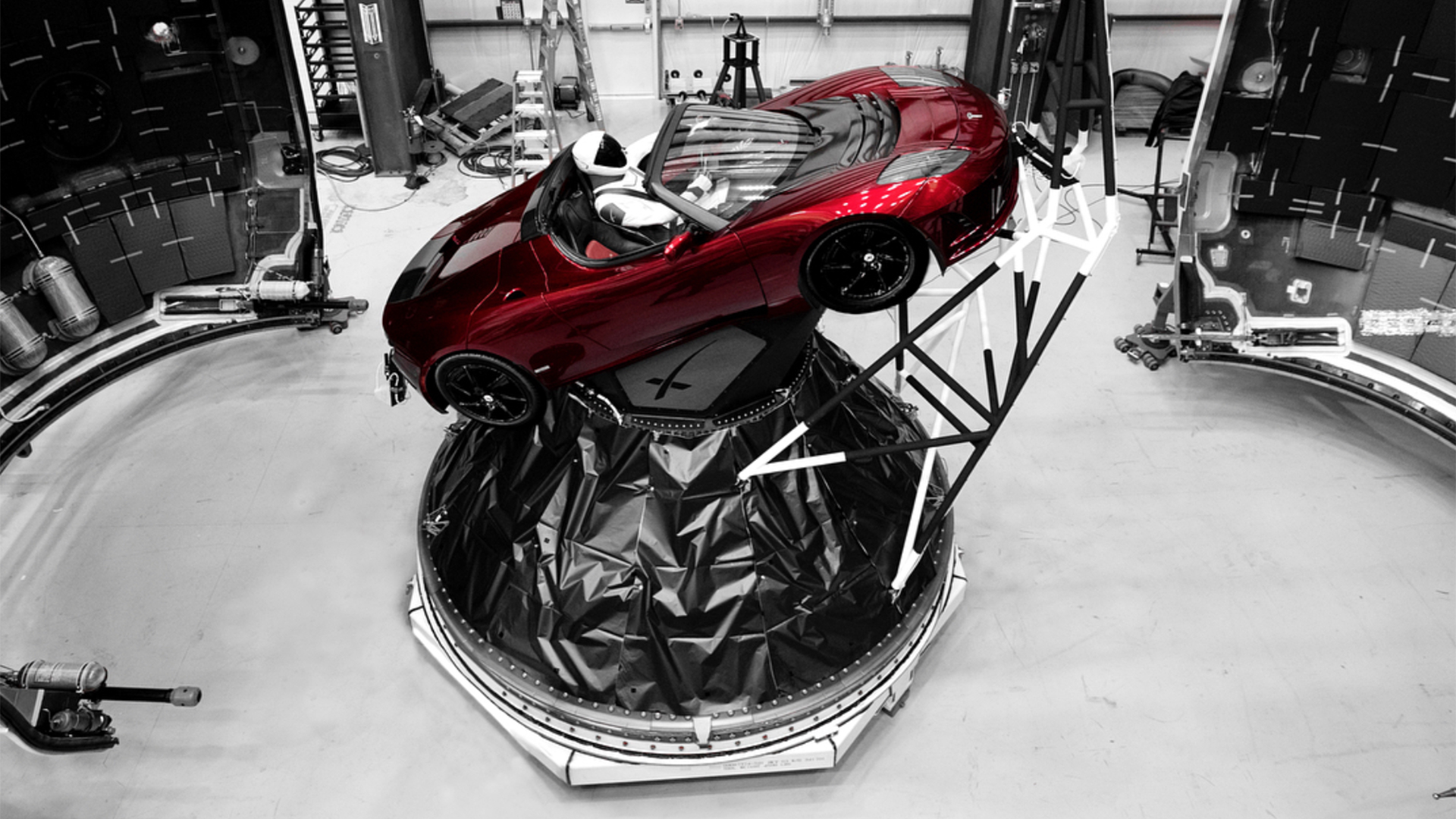

If everything goes according to plan, SpaceX will launch its gargantuan Falcon Heavy rocket for the very first time on Tuesday, a years-in-the-making endeavor that CEO Elon Musk hopes will open up new frontiers for both the company and the entire world. And just like he promised, it looks like Musk really will be taking the opportunity to put his old Tesla Roadster—driven by a dummy astronaut wearing the new SpaceX spacesuit—into a billion-year orbit around the Sun.
Musk shared a new image of the unusual payload on Instagram showing the original Tesla Roadster and its intrepid occupant (nicknamed “Starman”) ready to be loaded into the Falcon Heavy nosecone. SpaceX appears to have mounted cameras above the hood of the car, hopefully to capture some truly epic interplanetary driving footage. Eagle-eyed observers have also noticed what appears to be a tiny model Roadster with a spaceman doll attached to the dash.
After taking off from launch pad LC-39A at NASA’s Kennedy Space Center in Florida at 1:30 pm Eastern, Musk’s personal “Midnight Cherry” Roadster will end up in a heliocentric orbit that will eventually take it as far away from the sun as Mars—with its sound system blasting David Bowie’s “Space Oddity” on repeat until the batteries run out. (Not that anyone will be able to hear it, but hey.) Back on Earth, SpaceX will try to land all three of the rocket’s boosters so they can be reused.
No doubt, this is some extremely slick marketing, and an A-plus PR stunt. But the test mission is also chock full of not-so-symbolic meaning for SpaceX. Obviously, a successful launch would prove the viability of the Falcon Heavy, which is the most powerful rocket built since the Saturn V—and could be a stepping stone to the next stage of space exploration.
It would also give the company an invaluable opportunity to test its spacesuit in the actual vacuum of space as it competes with Boeing for crewed mission contracts from NASA. Finally, while its elliptic orbit won’t actually intersect with Mars, it could help demonstrate the viability of using the sun’s gravitational pull as a sort-of slingshot to decrease the time and energy needed to get to the Red Planet, a phenomenon known as the Hohmann transfer orbit.
In his original announcement, Musk proclaimed the usual test payloads to be “extremely boring” and said that the company wanted to use “something that made us feel.” Sure doesn’t hurt to get a cool science experiment out of it as well.